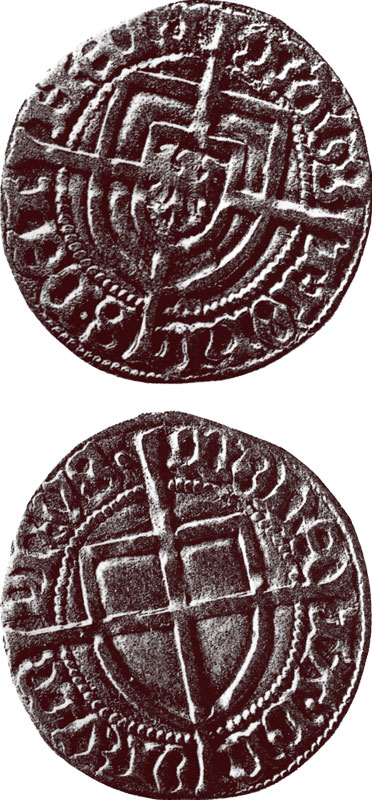|
Mariengroschen
The Mariengroschen ("St. Mary's ''groschen''") is an historical coin that was a type of '' groschen'' minted in Lower Saxony and Westphalia from the 16th to the 19th century. It was named after the Virgin Mary who was depicted on the reverse side.''Meyers Großes Konversations-Lexikon,'' Volume 13. Leipzig 1908, p. 298. ''Mariengroschen'' were first minted in Goslar in 1505 and then in other mints in the Harz mountain region, such as Brunswick and Hildesheim. The first coins were made of 8-lot silver; 80 being struck from 1 gross Cologne Mark. The fine weight decreased in the course of the 16th century;Vol. 5, p. 273 f. already around 1550 the fineness had been reduced to about half: * Brunswick 1514: weight 2.75 g with 1.375 g silver content; * Hildesheim 1528: weight 2.88 g with 1.062 silver content; * Goslar 1551: weight 2.43 g with 0.91 g silver content; * Brunswick 1572: weight 1.504 g with 0.69 g silver content. The knightly estates of the Lower Saxon Circle, w ... [...More Info...] [...Related Items...] OR: [Wikipedia] [Google] [Baidu] |
Groschen
Groschen (; from la, grossus "thick", via Old Czech ') a (sometimes colloquial) name for various coins, especially a silver coin used in various states of the Holy Roman Empire and other parts of Europe. The word is borrowed from the late Latin description of a tornose, a ''grossus denarius Turnosus,'' in English the "thick denarius of Tours". Groschen was frequently abbreviated in old documents to ''gl'', whereby the second letter was not an '' l'' (12th letter of the alphabet), but an abbreviation symbol; later it was written as ''Gr'' or ''g''. Names and etymology The name was introduced in 13th-century France as ', lit. "thick penny", whence Old French ', Italian ', Middle High German ', Low German and Dutch ' and English '' groat''. In the 14th century, it appeared as Old Czech ', whence Modern German '. Names in other modern European languages include: * sq, grosh * Church Slavonic-derived languages: Bulgarian, Macedonian, Russian and Serbo-Croatian ('), Ukrain ... [...More Info...] [...Related Items...] OR: [Wikipedia] [Google] [Baidu] |
Groschen
Groschen (; from la, grossus "thick", via Old Czech ') a (sometimes colloquial) name for various coins, especially a silver coin used in various states of the Holy Roman Empire and other parts of Europe. The word is borrowed from the late Latin description of a tornose, a ''grossus denarius Turnosus,'' in English the "thick denarius of Tours". Groschen was frequently abbreviated in old documents to ''gl'', whereby the second letter was not an '' l'' (12th letter of the alphabet), but an abbreviation symbol; later it was written as ''Gr'' or ''g''. Names and etymology The name was introduced in 13th-century France as ', lit. "thick penny", whence Old French ', Italian ', Middle High German ', Low German and Dutch ' and English '' groat''. In the 14th century, it appeared as Old Czech ', whence Modern German '. Names in other modern European languages include: * sq, grosh * Church Slavonic-derived languages: Bulgarian, Macedonian, Russian and Serbo-Croatian ('), Ukrain ... [...More Info...] [...Related Items...] OR: [Wikipedia] [Google] [Baidu] |
Principality Of Calenberg
The Principality of Calenberg was a dynastic division of the Welf duchy of Brunswick-Lüneburg established in 1432. Calenberg was ruled by the House of Hanover from 1635 onwards; the princes received the ninth electoral dignity of the Holy Roman Empire in 1692. Their territory became the nucleus of the Electorate of Hanover, ruled in personal union with the Kingdom of Great Britain from 1714 onwards. The principality received its name from Calenberg Castle, a residence of the Brunswick dukes. Territory When Duke Eric I of Brunswick-Lüneburg chose the Principality of Calenberg as his part of the inheritance in 1495, he described it as "the land between the River Leine and the Deister". This geographical description, however, was never totally correct. In fact, the Principality extended west of the Leine from Schulenburg as far as Neustadt am Rübenberge in the north and thus much further north than the foothills of the Deister. To the south-west the territory stretched as far ... [...More Info...] [...Related Items...] OR: [Wikipedia] [Google] [Baidu] |

